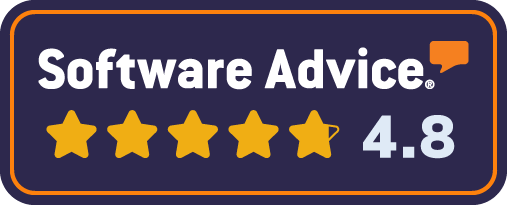Don’t Fear Big Data. Fear BAD Data.
If you’ve heard the term Big Data, or if you’ve read much about data collection, you may think one of the following:
- Data collection is a growing menace.
- Big Data only applies to Big Companies.
- Thinking about data collection is someone else’s job.
Depending on how many of those statements you believe, it may be time to shift your perceptions on data. Let’s examine some key myths about data collection.
Myth #1: Data collection is a growing menace.
For the last two decades, governments and corporations have been vacuuming up data on each of us. But if 2018 is to be remembered for one thing in the history of technology, it will be recalled as the year when a giant ‘Pause’ button was pressed on the relentless march of data collection on consumers. 2018 saw Mark Zuckerberg dragged in front of Congress to testify about Facebook’s data collection. We saw the European Union put in force its GDPR consumer data privacy protections. For American publishers and marketers who thought they could simply ignore the EU, we saw the passage of the California Consumer Privacy Act. And at the end of the year, we saw the publication of the detailed report on Russian election meddling (based on sophisticated data collection) commissioned by the US Senate.
In short, in a growing number of countries, data collection is no longer a free-for-all, with supine regulators and blithely ignorant consumers. Individuals in most places (except citizens of totalitarian regimes, or countries with single-party political systems) now stand to gradually gain more knowledge of what data is being collected on them, and more control over how it is used. So the ‘menace’ factor around Big Data has begun to decrease.
Furthermore, collecting data on people isn’t inherently a bad thing – what matters is how data is collected, and how it’s used. Consider Google Maps or Waze, which give you real-time traffic information as you’re driving. These apps are able to warn you about slowdowns and suggest alternate routes because they’re collecting real-time data on millions of peoples’ phones as they drive, and thus they know when people on a similar route have run into traffic ahead of you. Unless you’re on the run from the authorities, this type of data collection is highly beneficial.
Myth #2: Big Data only applied to Big Companies.
Coined in 2005, the term “Big Data” entered widespread use around 2013, to indicate not an amount of data, but rather an approach to data.
Perhaps you think that Big Data is limited to Fortune 500 firms, but even small-to-medium businesses are leveraging Big Data. Does HubSpot or Mailchimp suggest an optimal time for your promotional email to go out? Does Gmail now offer to finish your sentences? If so, you’re one of the millions of beneficiaries of Big Data. Facebook, Amazon, Google and other large-scale platforms are turning their mountains of data into products and insights that nearly any size business – including yours – can purchase and use.
But in a larger sense, Big Data is best thought of as a mindset shared by those who are refashioning the entire world along digital lines. A Big Data approach to developing products, services, content and marketing is one in which Data sits in the driver’s seat, Intuition rides shotgun, Experience is a backseat driver, and anything non-digital is stuffed in the trunk (if not left on the curb.)
In the bad old days, data rode in the backseat. Typically, data was collected and analyzed after a strategy was proposed (typically by an experienced senior person) in order to validate the strategy. That’s how business had worked for the previous, well, forever. But it’s a whole different world today. More and more, companies start by collecting and analyzing data first, then build their strategy, iteratively, upon those data insights. That’s what the Big Data mindset is really about. And that mindset can benefit every business, not just the big guys.
Myth #3: Thinking about data is someone else’s job.
Coming of age in the late 1980’s as a bit of a nerd, society had my future career path mapped out: Like other vaguely nerdy kids who collected, analyzed and obsessed about things, I was destined to work in a back office somewhere, safely out of sight from customers and far below the Olympian heights of corporate leadership.
Then, along with the end of Cold War, another massive social change during my early career was the Ascendancy of the Nerds. Starting in the mid-90’s, nerds began founding and leading the most important and innovative companies (Microsoft, Amazon, Google, etc.) and generally gaining esteem throughout the workforce. Today, not only is it completely OK to be nerdy, it’s less OK to be not-nerdy. Being technophobic is now uncool for workers of any generation, and each year it’s less and less OK to be ‘dataphobic’, no matter what your job is.
Do you work in Sales? It’s likely your CRM, such as Salesforce, provides you a wealth of data on prospects that you can and should review before your first outreach. And before you ask current clients for a follow-on sale or renewal, you’ll need to know every KPI for their account. Do you work in Client Success? You’ll need to be comfortable pulling and interpreting data on your clients, so you anticipate issues they may be having with your product or service before they even raise the concern. And of course, Marketing, Product Management, Operations and Finance are more numbers-driven than they already were a few years ago.
Key Ideas to Move Your Data Strategy From Myth to Reality.
We think there are three, foundational ideas to take your data strategy to the next level, regardless of the size of your organization.
Embrace Data; But Definitely Have a Strategy. Most organizations are clear on the need for crucial data to effectively manage and grow their businesses. Surprisingly, however, there’s an unfortunate tendency to not centralize the management of that data strategy. It’s often the case that different divisions within an organization each go after particular data sets without an overarching data strategy.
With greater consumer awareness of data privacy and increasing regulatory oversight, it’s more important than ever to truly understand what data you’re capturing and specifically how you’ll use it. Here are a few key elements to consider:
- What are the key metrics you need to understand and manage your business? What data don’t you need that you’re currently collecting?
- What information could better inform your business strategies in regard to product development, competition, market understanding, and more?
- How, when, and where will you collect this data? And what is the experience for the user?
- How will internal users of this data become aware of it, access it, and optimize its usage?
An effective data strategy will put parameters in place and help immeasurably in leveraging the full potential of the data you collect.
Understand the Regulatory Environment; Be Transparent. Data privacy policy is currently going through a whirlwind of change. Depending on the industry you’re in, it’s increasingly important to ensure that at least one person is tasked to stay on top of the regulatory environment.
In addition, consumers are becoming savvier about their online data. It’s always best practice to be completely transparent about the data you’re collecting from your audience. Let them know how and why you’re using it, and frame it in a way that makes the resulting benefits to them clear and simple. We think there’s a tremendous branding opportunity in positioning yourself as a champion of customer privacy and as a “gold standard” data steward.
Put the User Experience First. The importance of the ‘how,’ ‘where,’ and ‘when’ of data collection cannot be overstated. Beyond being transparent about the data you collect, it’s also vital to create a data collection experience that engages users. Data collection doesn’t have to be giant forms or disruptive experiences. Once you understand what you want to collect, spend a significant about of time designing the flow of how you’ll you collect it. Data collection—done the right way—can actually provide value to your customers. For ideas on world-class data collection experiences, check out a few of these case studies.
Big Data Doesn’t Have to be Scary.
Grab the data beast by the horns and tame it, using a thoughtful data strategy and diligent stewardship. Doing so will lay the foundation of your future growth and success.






